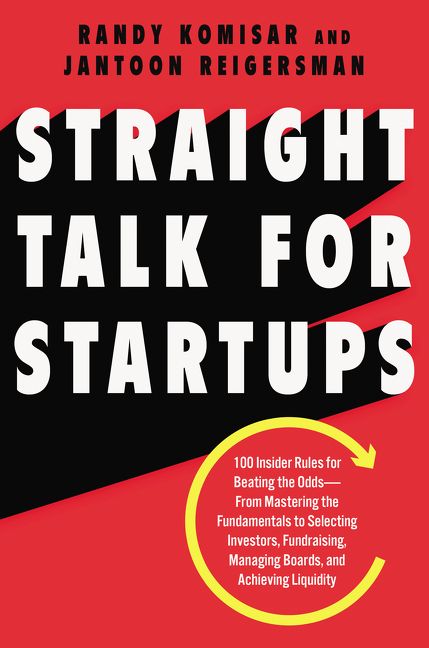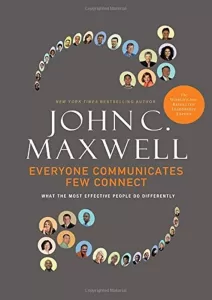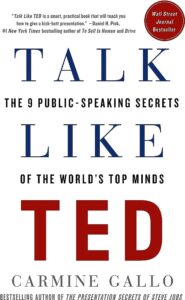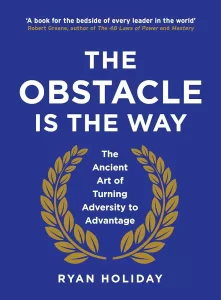Book Review: “Straight Talk for Startups”
Book: Straight Talk for Startups by Randy Komisar and Jantoon Reigersman
Reviewer: Bobby Powers
My Thoughts: 9 of 10
I just finished reading an advance copy of Straight Talk for Startups, which comes out June 5th. Komisar and Reigersman's book is a powerful startup manual reminiscent of Ben Horowitz's The Hard Thing About Hard Things. The authors share personal advice about the industry that one cannot find anywhere else. Many of their conclusions are non-intuitive and their advice is practical. They discuss how to manage working capital, what data to include when pitching VCs, and how to structure an effective board. All entrepreneurs and aspiring entrepreneurs can benefit from this book.
Takeaways from the Book
Starting a New Venture
- “Starting a venture has never been easier; succeeding has never been harder...More money brings more startups, which crowd markets with more competition hell-bent on rising above the crowd.”
- “Entrepreneurs need to believe, irrationally, that they are immune to the forces that defeat the normals every day and that they can succeed where a host of others have failed.”
- “If you are going to challenge the status quo, you have to give people a reason to change their behavior. The biggest challenge you face will be the inertia of your customers, who are prone to settling for ‘good enough.’ A successful new venture needs to bring at least a tenfold improvement to some aspect of a market or product; we call this the ‘order of magnitude’ contribution factor.”
- “Timing is critical. If you are right about the market but wrong about the timing, you will fail just the same.”
- “Breakthrough products are most often created by small teams, with strong leaders who eliminate all nonessential features in order to excel at the critical ones. There is no democracy in product development. It requires a benevolent dictator (hopefully not a tyrant) who may listen but will impose their will when needed. And perfection is not rational; it’s not a business trade-off. To produce insanely great products requires more than a little insanity. What successful ventures have in common is clarity of purpose and a focus on the customer value proposition.”
- “Success starts from doing one thing very well--then broadening as appropriate.”
Finding Investors
- “Avoid venture capital unless you absolutely need it...venture capital comes at a price, in the form of a meaningful percentage of your company. Perversely, the less you sell them, the less skin they have in the game and the less time and ‘value added’ attention you are likely to receive in return. So you have to be prepared to part with a significant portion of your company to even attract a good venture capitalist. You aren’t just raising money; you are selling ownership.”
- “The right partner is more important than the valuation. After all, you wouldn’t hire a mediocre executive for your team just because he or she is cheaper than the alternative. You want the best person you can hire for every person in your venture.”
- “Raising too much money is a curse. Early ventures with too much cash lose focus and become bloated...Too much capital allows you to ignore market feedback, especially negative feedback, and to fail to adjust to reality as it becomes painfully apparent.”
The Pitch
- “The key to a good pitch and process is to present sufficient details to demonstrate your mastery of your business. View this as an opportunity to bring clarity to your vision and purpose. The pitch should be simple, engaging, comprehensive, and concise--ideally, it should take no more than fifteen to twenty slides to adequately present the crux of your venture.”
- “Explaining why this [business/industry] is important to you goes a long way toward explaining why it should be important to your investor.”
- “Avoid overloading the audience with information. While you know your business cold, for them it may be the first time they ever thought about these topics.”
Boards and Board Meetings
- “Boards of directors play a unique and critical guiding role in supporting you. A great board is an invaluable asset. They augment your experience, network, and judgment. They can make a big difference in your ability to surmount challenges and create the largest potential. A bad board can sink a good company.”
- “When choosing such important partners, never assemble the ‘cheapest’ board, in the form of investors simply willing to invest the most at the highest valuation.”
- “Small boards are better than big ones...For early-stage startups with at least two rounds of investment, experience suggests that five directors make for a good board. Three is too small, except in the very earliest days, and seven or more becomes a management chore and can be unproductive. You want an odd number to avoid ties.”
- “Don’t ‘oversell’ your board...When you get to the board meeting, stop selling. Your board is savvy to selling. They probably do it themselves, every day, for a living. But as your brain trust and confidants, they don’t want to be sold by you. They want the straight scoop. They want to wrestle with the facts and overcome the challenges with you. If they are to be effective, they need to know the unvarnished truth. Don’t sell the board.”
- “Too many unanimous board decisions is a sign of trouble...Split decisions demonstrate that smart people are listening and thinking, independently. That is the type of board you want. The more genuine the discussions and debates, the better the understanding and trust among the various parties. Too many unanimous decisions may signal that your board is relinquishing its authority or is disempowered.”
Other Thoughts
- “Entrepreneurship is important because it has the power to make the world better.”
- “Net income is an opinion, but cash flow is a fact...even though the net income reflects earnings and the entrepreneur has made money in accounting terms, it is not yet available as cash flow and cannot be spent. This is why too much growth can actually cripple your business in situations where the income statement and accounts receivable grow much faster than the cash flow available at any particular point in time. Such an imbalance in the net income and cash flow means that even though you are generating paper profits from your business, you still don’t have enough cash to support expanding labor and materials.”
- “Manage working capital as if it were your only source of funds. Effectively employing working capital--the difference between current assets and current liabilities--is the Holy Grail for funding early-stage companies...Management of working capital involves inventory management and the mastery of accounts receivable and accounts payable, including consideration of short-term debt service.”
Think you’d like this book?
Other books you may enjoy:
The Hard Thing About Hard Things by Ben Horowitz
Zero to One by Peter Thiel with Blake Masters
Startup CEO by Matt Blumberg
Other notable books by the author(s):
The Monk and the Riddle by Randy Komisar
Getting to Plan B by John Mullins and Randy Komisar
I F**king Love That Company by Bayard Winthrop and Randy Komisar






